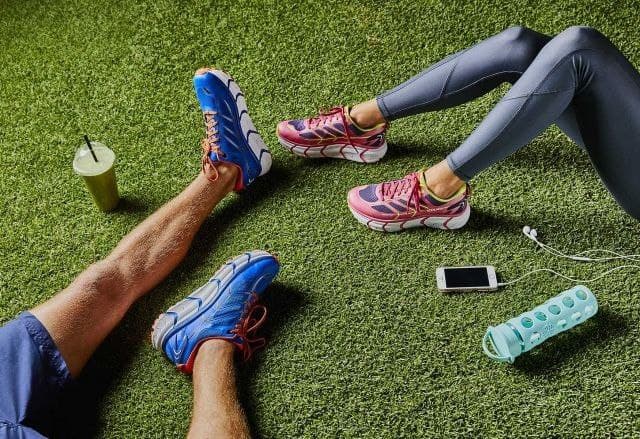We all know that exercise is a useful and necessary habit that we can do in our lives. In this article, we are going to explain to you some points about exercising so that you can exercise properly and with more awareness.
First, you need to know some benefits of regular exercise:
- Controls weight
- Fights health conditions and diseases
- Improves mood
- Increases energy
- Makes sleep better
How to exercise safely:
If you’ve never exercised before, or it’s been a significant amount of time since you’ve attempted any strenuous physical activity, keep the following health precautions in mind:
If you have health problems, get a medical license first.
If you have health concerns such as limited mobility, heart disease, asthma, diabetes, or high blood pressure, talk with your doctor before you start to exercise.
Warm-up
Before you exercise, think about warming up your muscles like you would warm up your car. It increases the temperature and flexibility of your muscles and helps you be more efficient and safer during your workout.
- Warm-up for 5 to 10 minutes. The more intense the activity, the longer the warm-up.
- Do whatever activity you plan on doing (running, walking, cycling, etc.) at a slower pace (jog, walk slowly).
- Use your entire body.
Cooling down
Cooling down after a workout is as important as warming up. After physical activity, your heart is still beating faster than normal, your body temperature is higher and your blood vessels are dilated. A cool-down after physical activity allows a gradual decrease at the end of the episode.
It’s good to stretch when you’re cooling down because your limbs, muscles, and joints are still warm.
- Walk for about 5 minutes, or until your heart rate gets below 120 beats per minute.
- Stretching:
- Hold each stretch 10 to 30 seconds. If you feel you need more, stretch the other side and return for another set of stretching.
- The stretch should be strong, but not painful.
- Do not bounce.
- Breathe while you’re stretching. Exhale as you stretch, inhale while holding the stretch.
Drink plenty of water
Your body performs best when it’s properly hydrated. Failing to drink enough water when you are exerting yourself over a prolonged period, especially in hot conditions, can be dangerous. Our body indeed needs a lot of water daily, but you should drink more water when you exercise. You can also use our app in this regard.
Listen to your body
If you feel pain or discomfort while working out, stop! If you feel better after a brief rest, you can slowly and gently resume your workout. But don’t try to power through the pain.
What time is better to exercise?
Morning workouts are ideal for burning fat and losing weight, but afternoon workouts may give your performance a boost since you’ll have eaten a meal or two by the time you get going.
How much exercise do you need?
The key thing to remember about starting an exercise program is that something is always better than nothing. Going for a quick walk is better than sitting on the couch; one minute of activity will help you lose more weight than no activity at all. That said, the current recommendation for most adults is to reach at least 150 minutes of moderate activity per week. You’ll get there by exercising for 30 minutes, 5 times a week. You can divide it into two 15-minute workouts or three 10-minute workouts.
For most people, aiming for moderate-intensity exercise is sufficient to improve their overall health. You should breathe a little heavier than normal, but not be out of breath. Your body should feel warmer as you move, but not overheated or sweating profusely.
What to eat before, during, and after workout:
Ideally, fuel up two hours before you exercise by:
- Hydrating with water.
- Eating healthy carbohydrates such as whole-grain cereals (with low-fat or skim milk), whole-wheat toast, low-fat or fat-free yogurt, whole grain pasta, brown rice, fruits, and vegetables.
- Avoiding saturated fats and even a lot of healthy protein — because these types of fuels digest slower in your stomach and take away oxygen and energy-delivering blood from your muscles.
If you only have 5-10 minutes before you exercise, eat a piece of fruit such as an apple or banana.
“The key is to consume easily digested carbohydrates, so you don’t feel sluggish,” said Riska Platt, M.S., R.D., a nutrition consultant for the Cardiac Rehabilitation Center at Mount Sinai Medical Center in New York.
During: Make a Pit Stop.
Whether you’re a professional athlete who trains for several hours or you have a low to moderate routine, keep your body hydrated with small, frequent sips of water.
Platt notes that you don’t need to eat during a workout that’s an hour or less. But, for longer, high-intensity vigorous workouts, she recommends eating 50-100 calories every half hour of carbohydrates such as low-fat yogurt, raisins, or banana.
After: Refuel Your Tank.
After your workout, Ms. Platt recommends refueling with:
- Fluids. Drink water, of course. Blend your water with 100% juice such as orange juice which provides fluids, carbohydrates.
- Carbohydrates. You burn a lot of carbohydrates — the main fuel for your muscles — when you exercise. In the 20-60 minutes after your workout, your muscles can store carbohydrates and protein as energy and help in recovery.
- Protein. Eat things with protein to help repair and grow your muscles.
Don’t forget that what you put in your body (nutrition) is as important as what you do with your body (exercise). Both are crucial to keeping your engine performing at its best.
In the end, we’re sure you know more about exercise. If you are still unsure about whether or not to include exercise in your daily routine, you have gained more confidence by reading this article.

